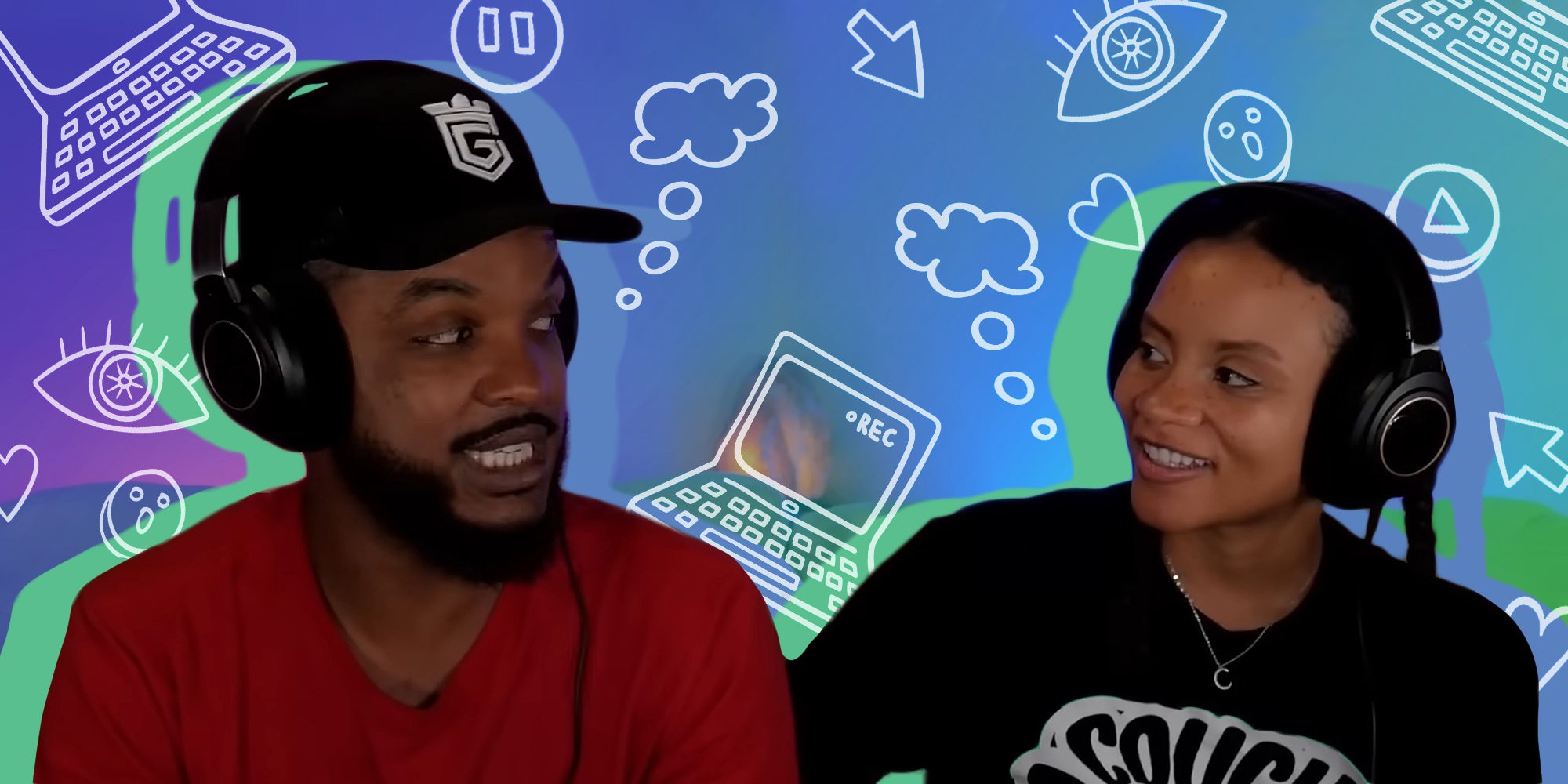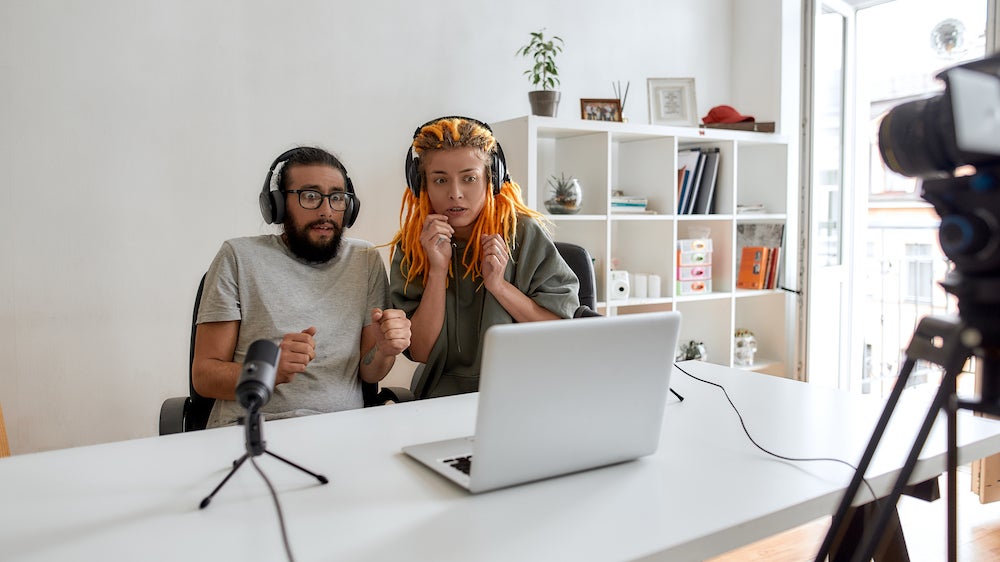
How should reaction video creators react to YouTube copyright strikes on their channel? Does fair use apply to all reaction videos? The answer, sadly, is that it depends. Let’s talk about why creators encounter pushback and the legal issues that can follow when they do. Are reaction videos fair use? Here’s what you need to know.
Are Reaction Videos Legal?
When people ask, ‘Are reaction videos legal?’ they usually think about criminality. It’s not illegal, but creating a reaction video could get you into some legal trouble. Most likely, a copyright infringement lawsuit (at least).
When you create something in a fixed tangible medium, you acquire certain legal rights called a copyright. Copyright protection only extends to the things you made, such as a video, photo, blog post, etc. This doesn’t extend to things that you yourself did not create.
Part of your rights as a copyright owner include enforcing your rights against copycats. This is what Kim Kardashian did regarding a questionable energy drink ad. Sometimes, a copyright holder will report instances of infringement through the DMCA takedown process. Either of these mechanisms can have damaging consequences against an alleged infringer.
With content creation, a creator’s content and copyright considerations do not occur in a vacuum. Thanks to licensing agreements and platform features, platforms often encourage creators to incorporate other people’s copyrighted works.
Think of the trending sounds, dance choreography, or logos. This seemingly natural run-of-the-mill strategy creates more legal issues than creators realize.
In the reaction video space, creators are seeing what it is like to be on the other side of a copyright infringement dispute. They are in the crosshairs of copyright holders dealing with copyright strikes and DMCA takedown notices, some even going as far as defending themselves in a lawsuit. This all boils down to one misunderstood defense to copyright infringement—fair use.
What Is Fair Use?
Reaction videos involve the use of someone else’s content or copyrighted work. Most creators probably don’t request permission to use another person’s content beforehand because they see that as a bigger risk. However, if they got permission in the first place, they would not have to worry about receiving a copyright strike.
Copyright owners have the legal right to control how other people can use their work. They exorcise that right by filing DMCA takedowns for instances of infringement.
Fair use is a defense to a claim for copyright infringement. This means someone has to call you out for infringing on their copyright. They also must believe that your use of the person’s work (without permission) is exempt from this defense. Courts who analyze a fair use defense consider the following factors to determine whether fair use applies:
- The purpose and character of the use;
- The nature of the copyrighted work;
- The amount and substantiality of the work used; and
- The effects of the use upon the work’s potential market value or actual value.
Most fair use analyses hinge on the first factor. This is where courts address whether the use was a commentary, parody, educational, or news. If it turns out that one of these protected exceptions applies, more likely than not, fair use applies.
The fourth factor is also important. It addresses whether the use is meant to substitute or replace the existing copyrighted work within the market. It’s also important to note that scathing commentary does not amount to substitution. Here’s a legal example.

The Case of Hosseinzadeh v. Klein
In Hosseinzadeh v. Klein, No. 16-CV-3081 (S.D.N.Y. Aug. 23, 2017), reaction creators Ethan and Hila Klein posted a 14-minute reaction video to the Plaintiff, Matt Hosseinzadeh’s video about a bold character pursuing a woman.
The Kleins did not hold back on the criticism, commentary, and mockery of Hosseinzadeh’s video. The reaction video featured approximately 3 minutes of Hosseinzadeh’s five-minute, twenty-four-second video. Initially, Hosseinzadeh filed a DMCA notification through YouTube, but the Kleins filed a counternotification, claiming it was fair use and noncommercial.
Hosseinzadeh then filed a lawsuit against the Kleins for copyright infringement and a defamation claim after the Kleins publicly talked about the dispute in a video. Eventually, the parties filed motions for summary judgment.
This motion is essentially a request that a judge decide certain issues of a case without getting a jury involved (aka, no trial). In this case, the Kleins were asking the judge in their case to decide whether their use of Hosseinzadeh’s video in their reaction video is exempt by the fair use defense.
The Court (the judge) agreed, stating, “any review of the Klein video leaves no doubt that it constitutes critical commentary of the Hoss video; there is also no doubt that the Klein video is decidedly not a market substitute for the Hoss video. For these and the other reasons set forth below, defendants’ use of clips from the Hoss video constitutes fair use as a matter of law.” So it was a win for the Kleins.
A win for the Kleins, does not mean a win for all reactors, though. The judge in the Klein’s case made it abundantly clear, stating “the Court is not ruling here that all ‘reaction videos’ constitute fair use.”
Do reaction videos get YouTube copyright strikes?
They could, and if creators either fail to respond with a counternotice or don’t have a valid defense like fair use, it’s costly. Creators who receive three copyright strikes on YouTube stand to lose their channel, monetization, and their audience.
Per YouTube’s own FAQ, “[t]here aren’t any magic words to automatically apply fair use. When you use someone else’s copyrighted work, there’s no guarantee that you’re protected under fair use.”
Earlier this year, creators Brad & Lex were on the verge of losing their channel after multiple DMCA notices filed by Universal Music Group. The notices were overreaction videos featuring music by the Eagles. Brad & Lex are reaction creators who react to different music tracks from a variety of genres.
After receiving two DMCA notices, Brad & Lex shared a video explaining that they had two copyright strikes on their channel. They were one strike away from losing their channel, and made the Eagles videos private. Weeks later, they posted a follow-up video explaining that they responded to the DMCA notices by filing a counter-notice.
Even after restoring their channel on YouTube, Brad and Lex stated that they are hesitant to reinstate the Eagles reaction videos after this ordeal.
How do I avoid copyright strikes?
Try as you might to credit the other person, it may not be enough. Even including disclaimers like “no copyright ownership” or “no copyright infringement intended” are sometimes seen as red flags to the contrary. Some copyright owners are pretty aggressive about enforcing their rights. Often, they’ll file DMCA notices without considering whether fair use applies.
Instead, they rely on platforms like YouTube to side with them after filing the DMCA notice. This is because of how the DMCA process works. One of the benefits of the DMCA process is copyright owners can get their stolen content removed by platforms without having to confront the infringer. Consequently, reaction creators are forced to deal with the fallout.
Unless reaction video creators are savvy enough to know that their use is covered by fair use, the copyright strike stays on their channel. It’s important to respond to these DMCA notices if a valid defense, like fair use, applies through a counternotice. Do not let DMCA notices go unanswered.
If a copyright owner doesn’t file a lawsuit within 14 days of receiving that counternotice, then the relevant platform or website can put the content back up. Simply archiving or deleting the content will not negate a copyright strike.
Alternatively, creators could request permission to use the content before posting. By getting permission to use someone else’s content, then they minimize their exposure to these damning strikes. there is no need to get into a fair use analysis.
A Brief Legal Disclaimer
The content discussed in this article is for educational purposes only and not for the purpose of providing legal advice. Use of and access to this article does not create an attorney-client relationship between Curator Counsel PLLC and you. The material and information presented should not be relied upon or construed as professional advice. You should not take action based upon this information without consulting legal counsel.




